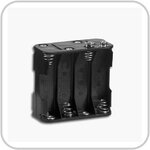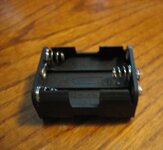Joe(TX)
Hero Member
.........................I think that this detector is an underdog............or not really given the praise that it deserves!................Probably from the late 1970's or early 1980's ...................It is a VLF/TR..................Mine has a Green Target Light( besides the meter) that glows brightly or dimly..........depends on the target's response!!.........Only fault is the battery compartment ............all the batteries has a very tight fit plus the battery cover is easily lost!!...............Joe






 I got it all put back together The batteries were corroded and the back battery cover was missing. Used a Q-TIP moistened with LIMEAWAY (
I got it all put back together The batteries were corroded and the back battery cover was missing. Used a Q-TIP moistened with LIMEAWAY (  Am I doing something wrong ? The 280 turns on, the battery checker seems to work and fiddling around some metal stuff indeed was detected on my living room floor ? One last question; can I use the same corrosion inhibitor from PERMATEX (
Am I doing something wrong ? The 280 turns on, the battery checker seems to work and fiddling around some metal stuff indeed was detected on my living room floor ? One last question; can I use the same corrosion inhibitor from PERMATEX ( 

